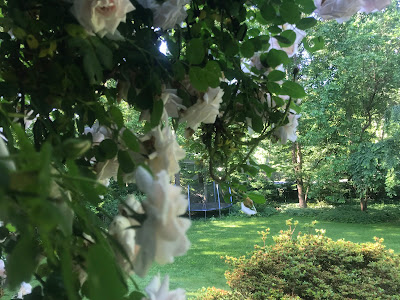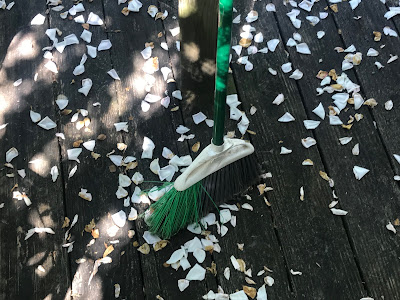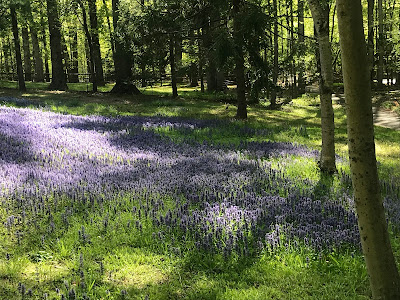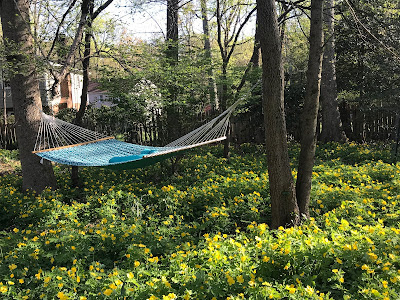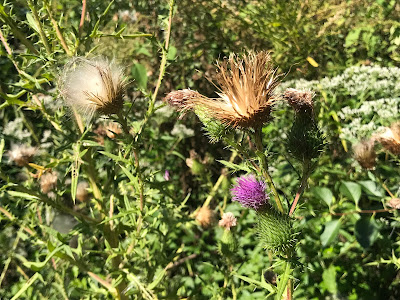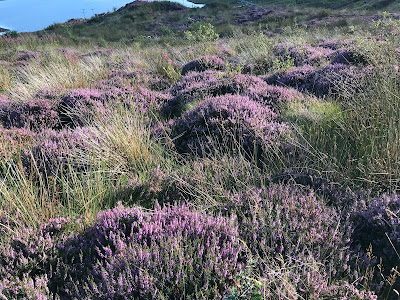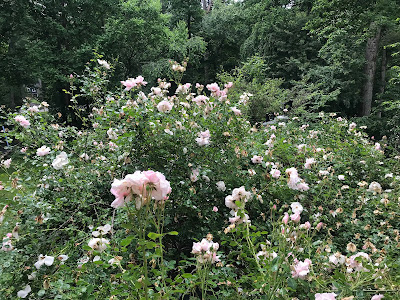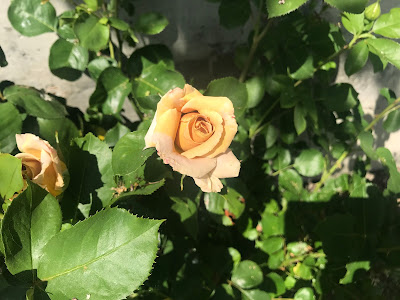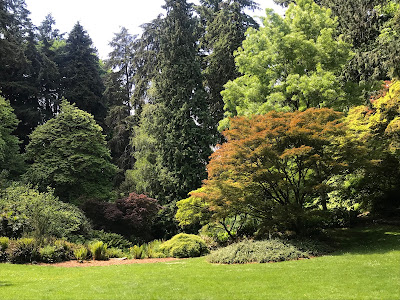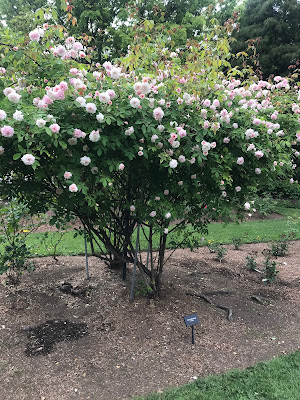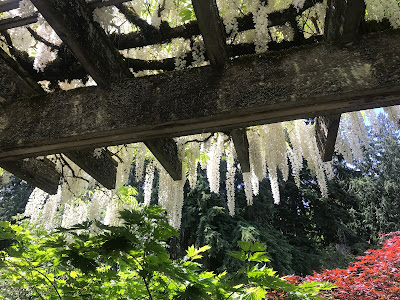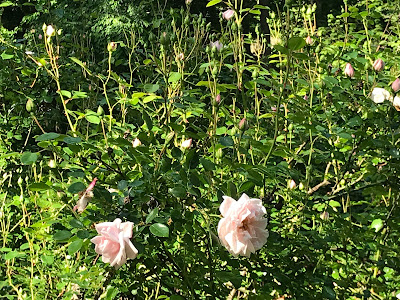Rose Time
The climbing rose peaked a few days ago, but the plant is still weighed heavy by blossoms, and when I sit on the deck to write the air is filled with fragrance.
When I look out at the yard through its flowers, it’s a little like looking at the world through rose-tinted glasses.
But at some point, I must squeegee off the glass-topped table and abandon for a minute my journal or laptop to sweep up petals with the old broom I leave outside.
What better way to enjoy the rose than by immersing myself in its detritus, still soft and pearly pink?
